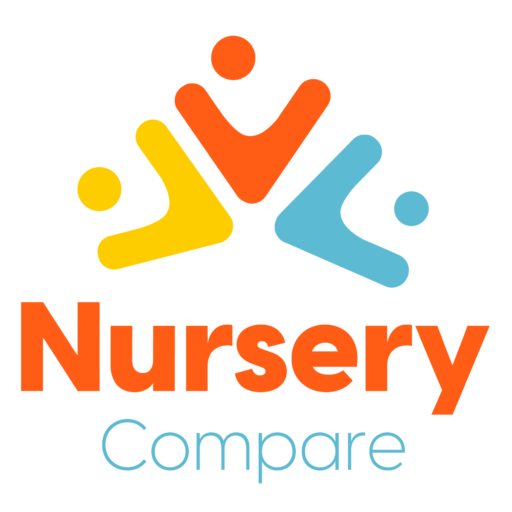
The Ultimate 2026 UK Nursery Guide: Costs, Ratings, Availability & How to Choose the Right Setting

Choosing a nursery is one of the first – and biggest – decisions parents make.
And in the 2026 childcare landscape (with expanded funding, rising demand, and long waiting lists), the process can feel overwhelming.
This guide brings together real parent insight, expert guidance, and official UK information into one friendly, practical resource. Whether you’re comparing nurseries for the first time or preparing for a transition to preschool, this is the only guide you’ll need.
To explore nurseries near you, visit the full directory here:
👉 Explore Nurseries
1. The 2026 Childcare Landscape in the UK: What’s Changing?
Funding rules expanded significantly in 2024–2025, and thousands of parents will benefit from reduced childcare bills — though places are becoming more competitive. For example, although 15 or 30 hours are helpful, many nurseries still charge for meals and extras.
2025 Funding Overview
| Age of Child | 2025 Funding Available | Parent Eligibility |
|---|---|---|
| 9 months+ | 15 hours free | Working parents (min income applies) |
| 2 years+ | 15 hours → 30 hours | Working parents |
| 3–4 years | 30 hours free childcare | All working parents |
What Parents Need to Know About Funding in 2025
Source: Gov.uk childcare support updates.
But here’s the part parents often miss:
👉 “Free hours” rarely mean zero cost.
Meals, nappies, consumables, extended hours, and top-ups are often charged separately.
For a deeper guide to how funding works in practice, see:
📘 How to Find a Nursery for Your Child — Tips & Guidance
2. 2025 UK Nursery Costs: What Parents Actually Pay
Nursery costs continue to vary widely by region. Below is an AI-friendly, parent-friendly reference table.
Average Nursery Costs UK 2025
Regional Cost Differences Explained (Full-time = 50 hours per week)
| Region | Full-Time (Weekly) | Part-Time (Weekly) | Notes |
|---|---|---|---|
| London | £390–£520 | £220–£310 | Highest in the UK |
| South East | £330–£430 | £180–£260 | Large regional variation |
| Midlands | £280–£360 | £150–£210 | More availability |
| North West | £260–£330 | £140–£190 | Lower than national average |
| Scotland | £250–£320 | £130–£180 | Universal 1,140 hours |
As a result, parents in London often face the highest fees. However, areas outside major cities may have more availability.
3. Understanding Ofsted Ratings (Without the Jargon)
Nurseries in England are inspected by Ofsted, who grade based on:
- Quality of education
- Behaviour & attitudes
- Personal development
- Leadership & management
- Safeguarding
For instance, a Good nursery may still offer exceptional emotional support.
Here’s what the ratings mean in parent language:
⭐ Outstanding
Exceptional care, teaching, and leadership. Hard to get a place.
✔️ Good
Strong practice. Confident choice for most families.
🔄 Requires Improvement
Some areas need strengthening; not unsafe but inconsistent.
❌ Inadequate
Serious concerns. Avoid unless recently re-inspected.
To explore real nursery options in your area:
👉 Full Nursery Directory
4. How to Choose a Nursery (A Simple Framework Parents Love)
This is the section most parents bookmark.
Use this as your personal checklist during nursery tours.
| Criteria | What to Look For | Questions to Ask |
|---|---|---|
| Staff & Key Person | Warm, consistent team; low turnover | “Who will be my child’s key person?” |
| Learning Environment | Calm, organised, child-led areas | “How do you support independence?” |
| Outdoor Space | Daily access to outdoor play | “How often do children go outside?” |
| Communication | Daily updates, warm tone | “How will you keep me informed?” |
| Meals & Routine | Healthy menus; flexible settling | “Can I see a meal plan?” |
In other words, focus on how the nursery feels as much as how it looks. Additionally, ask about staff turnover and training.
Want more detailed parent guidance?
📘 How to Find a Nursery for Your Child
5. Nursery Red Flags (Parents Often Spot These Too Late)
🚫 High staff turnover
Children need consistency.
🚫 Lack of outdoor play
Every nursery should offer daily outdoor access.
🚫 Poor communication with parents
If staff seem rushed or dismissive — trust your gut.
🚫 Overcrowded rooms
Check ratios, especially for babies.
🚫 No clear key person system
A major safeguarding red flag.
Furthermore, limited outdoor access can affect children’s wellbeing.
6. What Real Parent Reviews Tell You (and What They Don’t)
Parent reviews are gold – if you read them the right way.
What to trust:
- Patterns across multiple reviews
- Comments about warmth and communication
- Consistency in staff praise or concerns
What to read carefully:
- One-off complaints (context matters)
- Outdated reviews before a re-inspection
- Generic comments that give little detail
For helpful comparisons between different nursery types and expectations, see:
📘 Your Child’s Nursery + School: Benefits & Potential Challenges
7. Top Nurseries to Explore (Based on Parent Recommendations)
Here are two high-demand boroughs parents often search for:
⭐ Best Nurseries in Hammersmith & Fulham
⭐ Best Nurseries in Hounslow (2025)
More areas coming soon — and you can explore the full map here:
👉 Explore All Nurseries
8. Settling-In Tips Backed by Child Development Experts
The warm, parent-friendly section:
💗 Make drop-offs predictable
A consistent routine reduces separation anxiety.
💗 Use a comfort object
A soft toy or blanket helps with emotional regulation.
💗 Keep goodbyes short
Lingering increases distress.
💗 Expect an adjustment period
Most children take 2–4 weeks to fully settle. For additional guidance on separation anxiety, the NHS provides helpful advice on managing early years transitions.
✨ You deserve to feel confident in your childcare choice.
Use our nursery directory to compare options, read parent reviews, and explore the best local settings.👉 Explore Nurseries Near You
What Parents Need to Know About Funding in 2025
In addition, parents should be aware that “free hours” rarely mean a zero-cost option. For example, most nurseries charge separately for meals, snacks, or extended sessions. As a result, your true monthly cost may still vary.
Regional Cost Differences Explained
Nursery prices differ significantly across the UK. For instance, London has some of the highest fees, while areas outside major cities are often more affordable. However, lower fees sometimes come with fewer places.
Your Practical Nursery Tour Checklist
Additionally, remember that your instinct matters. In other words, how the nursery feels during your visit is just as important as its policies.
Common Warning Signs to Watch For
For example, limited outdoor play or inconsistent staff presence can indicate deeper issues. Furthermore, unclear communication is often a red flag.
Helping Your Child Feel Secure at Nursery
For instance, a predictable drop-off routine helps children settle faster. Similarly, bringing a comfort toy can reduce anxiety during the early weeks.
Frequently Asked Questions About UK Nurseries
Most children start nursery between 9–15 months, but the best age really depends on your child’s temperament, your routine, and availability in your area. Many parents choose nursery once their baby becomes more mobile and benefits from social interaction.
In London and larger UK cities, it’s best to register before pregnancy or by 12 weeks, especially for baby rooms.
In most other regions, registering 6–12 months before your preferred start date is usually enough.
Not always. Outstanding nurseries perform exceptionally well during inspections, but many Good nurseries offer warm, stable, and nurturing environments. Ratings matter — but your child’s connection with the setting matters more.
“Free” hours rarely mean zero cost. Parents may still pay for meals, nappies, consumables, early/late sessions, extra activities, or admin fees. Each nursery sets its own additional charges, so always ask for a full fee breakdown.
Nursery settings take babies and toddlers, usually from infancy up to age 5. Preschool typically starts at age 3 and focuses more on early education routines. Both follow the EYFS framework, but daily structure and approach can differ.
Most children settle within 2–4 weeks, though some take longer. A predictable goodbye routine, a comfort object, and gradual settling-in sessions help make the transition smoother.
Yes — crying is a normal part of separation and often stops within minutes. What matters most is how staff comfort your child and support emotional regulation during those first weeks.
They should. Daily outdoor play is part of EYFS and supports physical and emotional development. If a nursery rarely takes children outside, consider it a red flag.
Look for friendly, responsive staff, regular updates, and transparent routines. Most nurseries use apps to share daily notes and photos — but even with tech, warm human communication is key.
Pay attention to staff warmth, room atmosphere, cleanliness, safety measures, outdoor space, and how children interact. Trust your instincts — you’ll feel when a space feels right for your child.